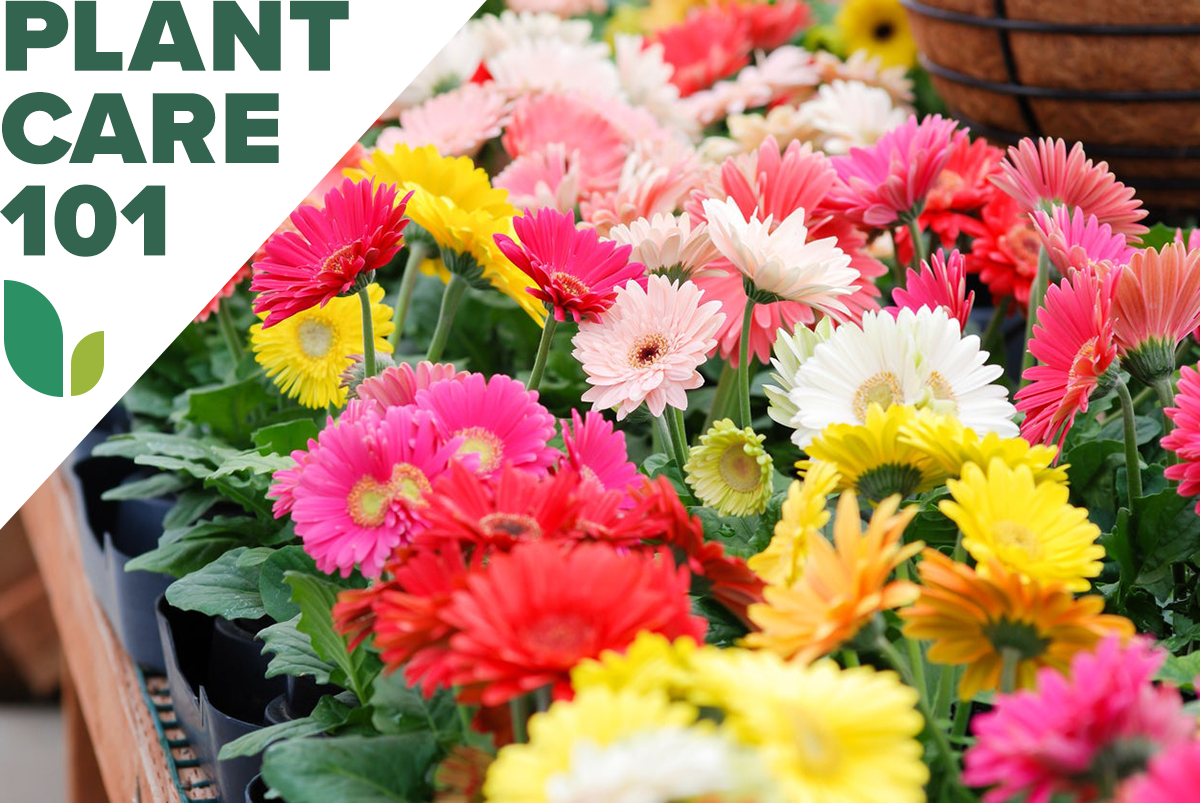

We may earn revenue from the products available on this page and participate in affiliate programs. Learn More ›
Although not actually a daisy, gerbera does belong to the same plant family as daisies, but it more closely resembles another relative—the sunflower. As with sunflowers, gerbera daisies’ large and intensely colored blooms stand out from a distance.
Perennial in USDA hardiness zones 8 through 11, the South African native often is grown as an annual elsewhere (usually as a winter annual in zones 12 and 13). A preference for acidic soil and cool nights, along with its susceptibility to crown rot, make gerbera daisy care a bit tricky, but those brilliant blooms are worth the bother.
RELATED: 14 Long-Lasting Flowers for Your Yard
Growing Gerbera Daisy at a Glance
Common Name: Gerbera daisy, Transvaal daisy
Scientific Name: Gerbera jamesonii x viridiflora
Hardiness Zone: Zones 8 to 11
Soil: Quick-draining; pH 5.5 to 6.2
Light: Full or partial sun
Water: Medium
Food: Low-phosphorus plant food
Propagation: Division or seed
Safety: Nontoxic
Gerbera Daisy Characteristics
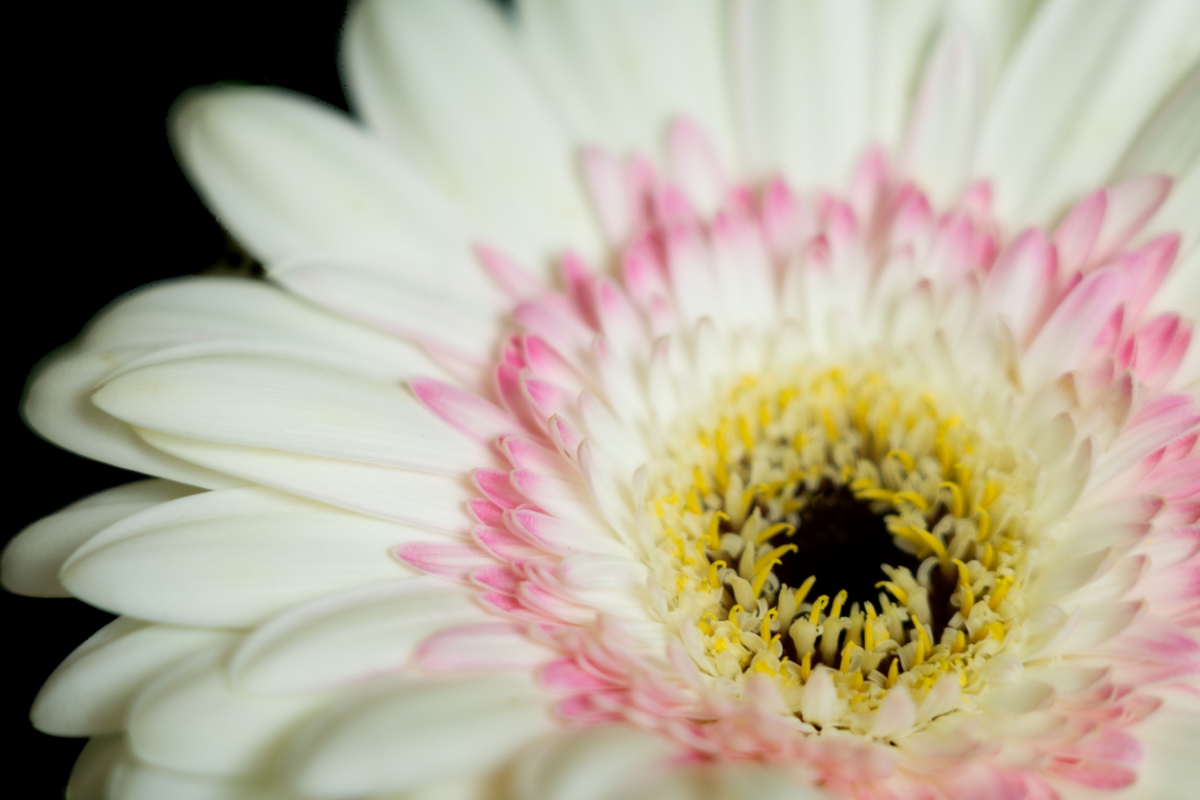
With rosettes of long, tongue-like, and sometimes lobed leaves, gerberas generally grow to about 1 foot in both width and height. They then send up leafless 18-inch flower stalks to hold their 2- to 6-inch blooms. However, dwarf gerbera daisy varieties can be as short as 7 inches tall, while extra-large types might shoot up to a height of 2 feet.
Derived from the crossing of South African species Gerbera jamesonii and Gerbera viridiflora, the gerbera flower is available in almost every color except blue and in a variety of shapes, including both single and double blooms. The latter may be crested, quilled, or just fulsomely full.
If you are unsure of the type of daisy you have, consult a plant identification app. Hardier ox-eye and Shasta daisies belong to an entirely different genus (Leucanthemum) than the gerbera daisies, so the below care routine differs completely from theirs.
Recommended Gerbera Daisy Varieties
- Cartwheel series: This series “wheels out” 3- to 4-inch single or semidouble flowers on 15-inch plants.
- Flori Line Maxi: A bright-colored variety, this “line” maximizes visual appeal with its 4-inch blooms on 12-inch plants.
- Garvinea series: The Garvinea series reportedly is hardier than most gerberas, reaching up to zone 7. It varies—according to cultivar—from 10 to 20 inches tall and has 2½- or 3½-inch blooms.
- Mega Revolution series: This gerbera flower series boasts large 5- to 6-inch blooms on 10- to 12-inch plants, but it is hardy only to zone 9.
RELATED: Late Bloomers: 25 Summer Flowers to Keep Color in Your Garden
Planting Gerbera Daisies
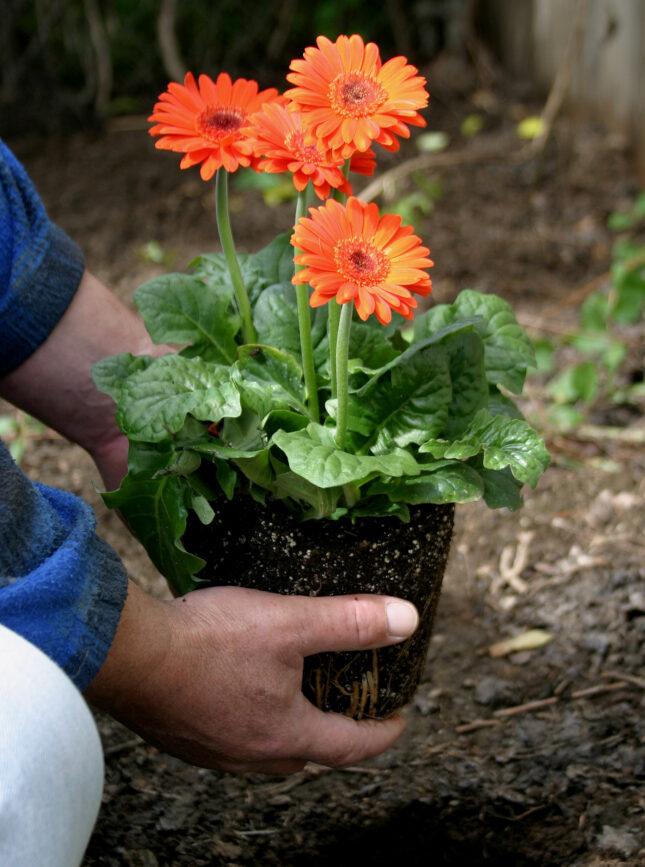
When considering how to grow gerbera daisies, keep in mind that they prefer somewhat cool conditions and bloom better in early summer and autumn than in midsummer.
When is the best time to plant gerbera daisies?
Because gerberas take 4 months or more to flower from seed, sow their seeds at least 3 months before the average last frost date. Set out seedlings—or purchased or overwintered plants—just after that last frost date has passed. In frost-free climates, set them out in autumn instead.
Where can gerbera daisies grow?
If the soil is heavy or soggy, plant gerberas in containers or raised garden beds rather than the ground. Otherwise, choose a sunny site with well-draining, acidic soil and dig a couple inches of compost into it. Those who live in the south can opt for a raised bed that receives morning sun and afternoon shade.
How do you plant gerbera daisies?
Water each gerbera plant well before removing it from its pot.
- If the roots appear to be circling the bottom of the pot, gently untangle them.
- Dig a hole shallow enough that when the plant goes inside, the root crown (where the tops of the roots join the stems) will be slightly above the surface of the soil.
- Set gerberas 12 to 18 inches apart from each other.
Can you grow gerbera daisies in containers?
These plants grow well in pots, too. In fact, if your ground soil is clay, they will probably grow better in containers full of looser potting soil than they would in the ground. Keeping gerbera daisies in pots also will make it easier to move them indoors during winter. A standard potting mix should work well for a gerbera daisy pot—provided the plants’ crowns stay slightly above the surface of the mix.
Watering Gerbera Daisies
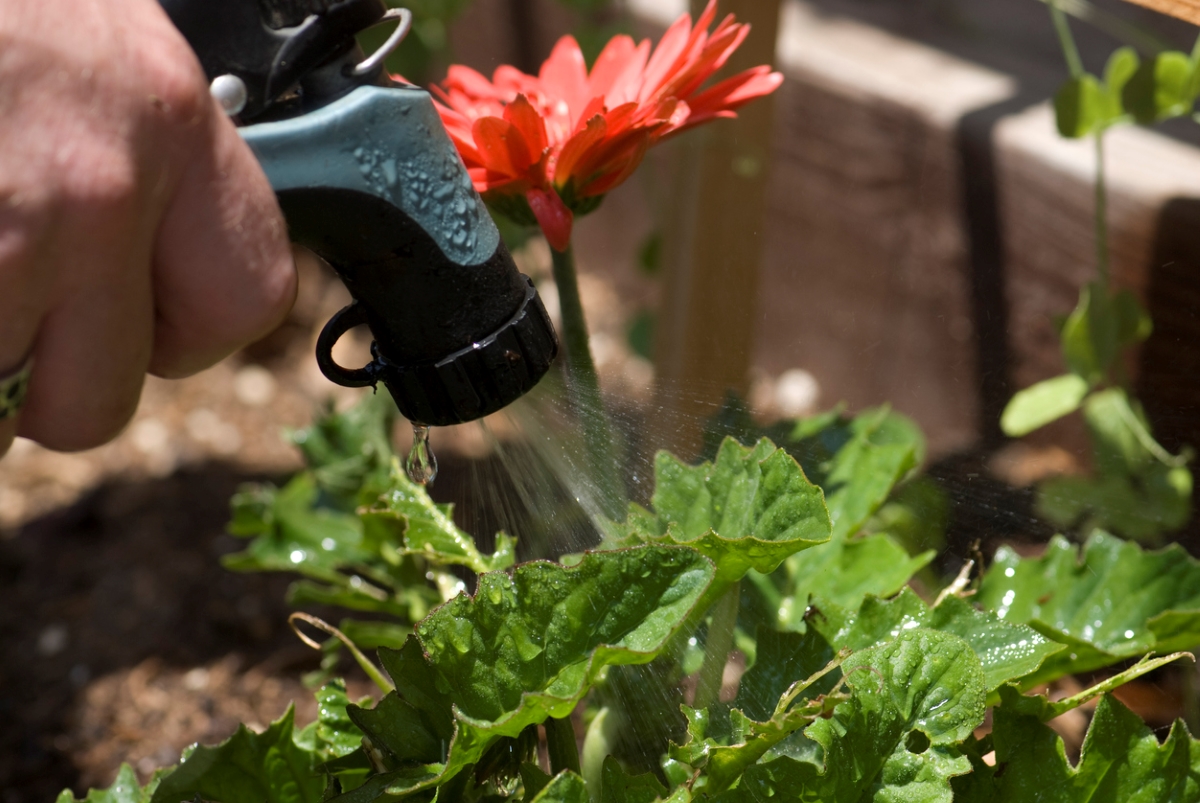
Watering gerberas can be a delicate balancing act between keeping the soil damp enough that it doesn’t dry out completely but not so wet that the plants’ crowns will rot. To accomplish that, water gerbera daisies when their soil is dry about 1 inch beneath the surface.
Water in the morning to allow the plants to dry out before evening, and avoid pouring water into the crowns. Instead, use a soaker hose or water the plants from the side, inserting the spout of the watering pail beneath their foliage.
Fertilizing Gerbera Daisies
Feed gerbera daisies once every couple weeks with a low-phosphorus liquid plant food such as 24-8-16 or the organic 3-1-2. Alternatively, apply a granular fertilizer intended for acid-loving plants, such as 15-5-15 or the organic 4-3-4 about once per month during the growing season.
Ideally, that fertilizer also should contain iron and manganese since gerberas are prone to deficiencies of those elements. If the plants begin to yellow try applying a spray containing those micronutrients.
Pruning Gerbera Daisies
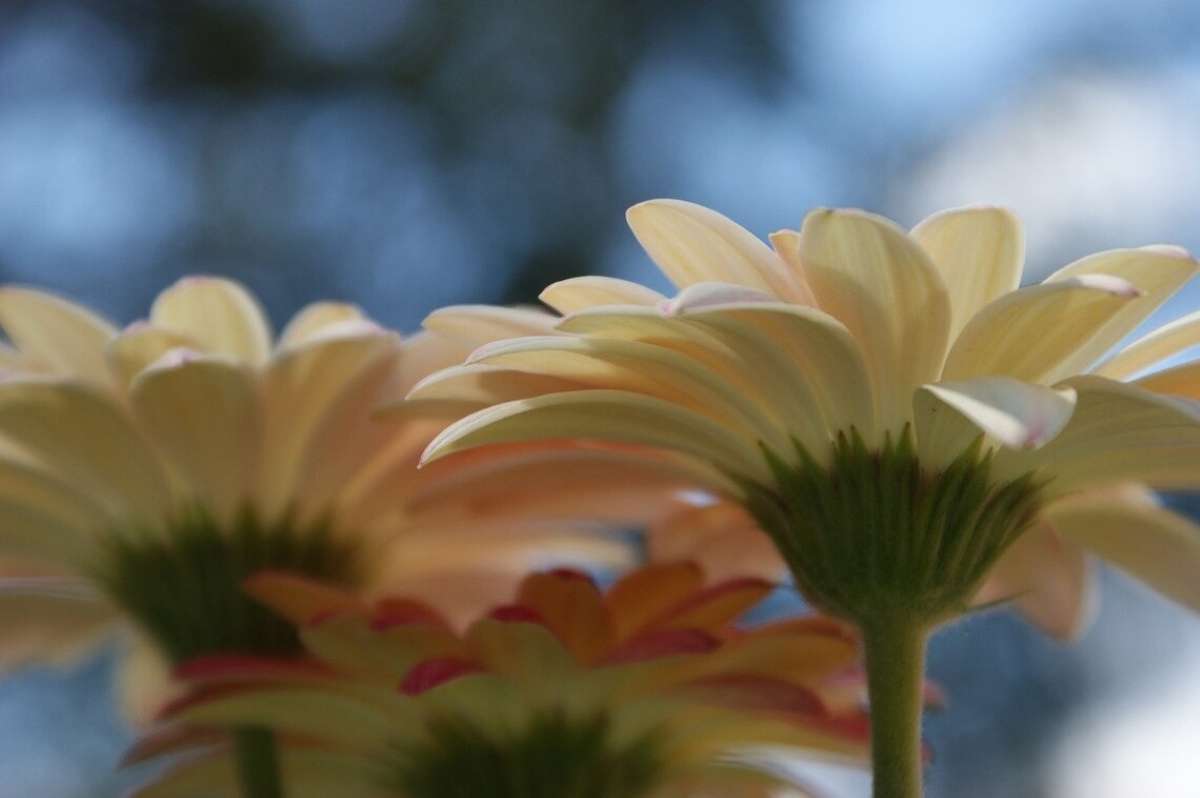
To keep gerbera blooming, snip off each bloom stalk after its flower has faded. Cut the stem at its base below the leaves to keep the plant looking tidy.
Gerbera plants bloom best when plenty of light reaches their root crowns. However, those crowns often are obscured by foliage. Therefore, it is a good idea to frequently cut away some leaves at the center of each plant to allow the sun to shine in. While doing that, remove any dead foliage as well.
Propagating Gerbera Daisies
Gerbera seeds should be plump and fresh (refrigerated since shortly after harvest) to be viable. Press those seeds into a damp seed starting mix, with their sharp ends down, but don’t cover them. Set their container under a grow light at a temperature of 68 to 75 degrees Fahrenheit until the seeds sprout, which can take 1 to 3 weeks.
To divide perennial gerberas that have developed multiple crowns, dig them up in spring. Separate the plants from each other, using pruning shears if necessary. Snip off about half of the gerberas’ lowest leaves before replanting them 12 to 18 inches apart.
Safety Considerations
Gerberas are considered nontoxic plants, though gardeners still don’t want to eat them! When grown indoors, gerbera daisies may cause symptoms in people who have allergies.
Actually, plants with showy blooms like gerberas’ usually depend on insects to move their pollen so they don’t release as much of it into the air as plainer flowers might. However, those “daisies” still could be irritating to highly pollen-sensitive people and pets. Also, the plants’ somewhat fuzzy leaves gather dust easily, which could provoke sneezing, too. However, gerbera is commonly cited as a houseplant that helps keep indoor air fresh.
RELATED: The 18 Best Plants for Your Bedroom
Potential Pests and Diseases
If large holes appear in a gerbera daisy’s foliage overnight, slugs probably are the culprit. To eliminate them, scatter slug bait such as iron phosphate pellets on the soil around the plants, replacing it after heavy rains.
Gerberas are prone to powdery mildew, which resembles gray powder sprinkled over their foliage, especially during periods of cool humid weather. To prevent it, growers can spray the plants with a neem oil solution about once per week. That fungicide also can serve as an insecticide against pests such as whiteflies and thrips. Spray in the evening to avoid affecting bees.
Overwintering Gerbera Daisies
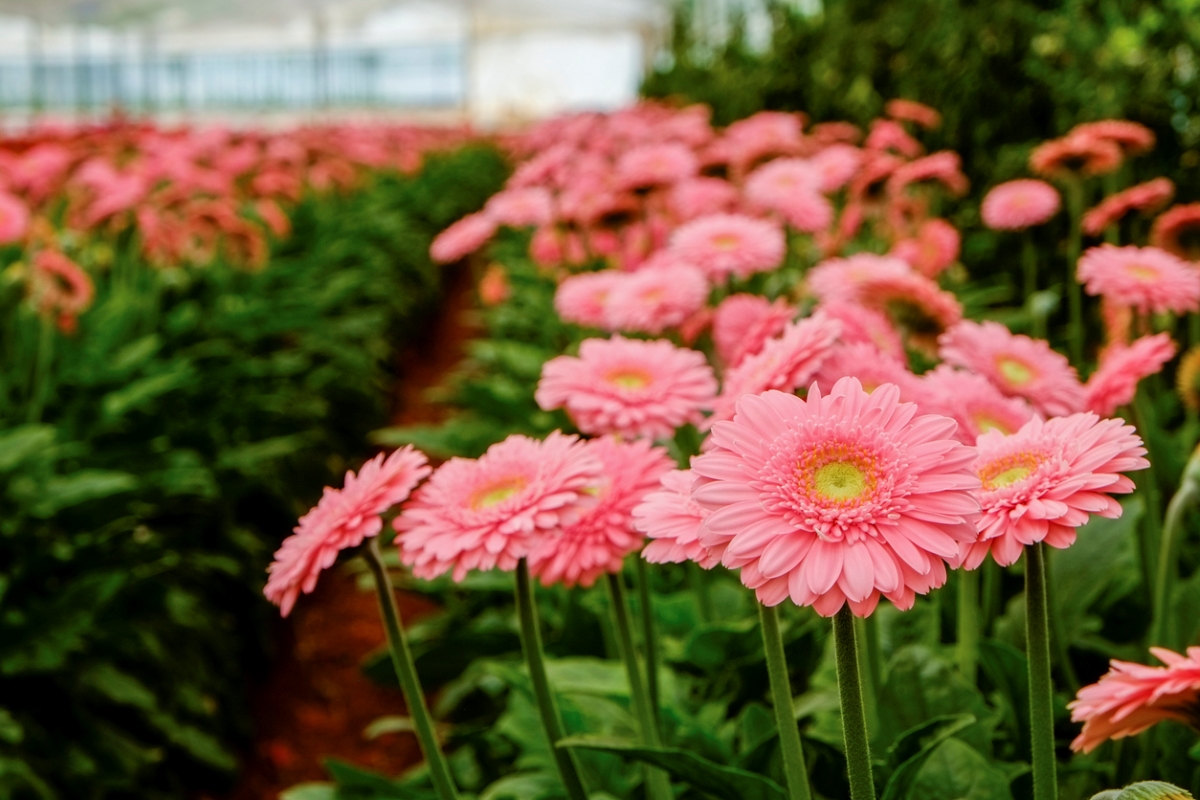
If you can’t bear to give up your gerbera when freezing weather arrives, consult the information below for cold-weather gerbera daisy care.
When is the best time to bring gerbera daisies indoors?
When bringing in gerberas indoors for the winter, do so before temperatures drop below 40 degrees Fahrenheit. Should they accidentally remain outdoors on a frosty night, don’t panic, however. Some hardier cultivars will survive light frosts (down to 28 degrees Fahrenheit), though damage can occur.
How do you overwinter gerbera daisies?
A cool greenhouse can protect gerberas over winter, but finding another location where chilly temperatures can keep them happy but avoid freezing also can work.
- Choose a sunny, airy, and cool location for the gerberas, such as an unheated attached garage or sunporch, where the temperature remains between 45 and 60 degrees Fahrenheit.
- Reduce the amount of water they receive in winter, but don’t allow their soil to dry out completely.
- Refrain from fertilizing the plants until spring arrives.
Looking for more plants with showy flowers? Check out our guides on growing dahlias, hibiscus, and marigolds.
